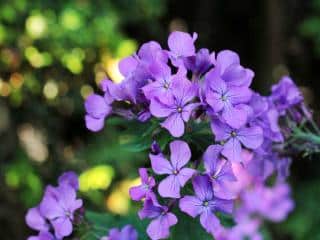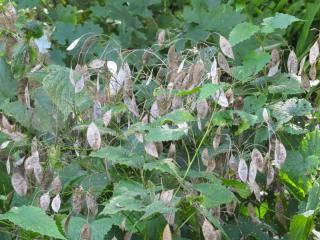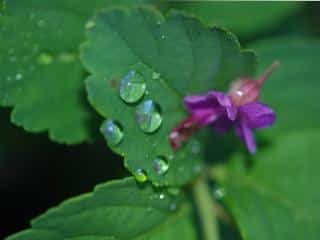

Whether it’s perennial or biennial, Lunaria is an ornamental plant for both garden and inside the house! Indeed, its fruit and seed pods make for lovely dry bouquets.
Lunaria key facts:
Latin name: Lunaria sp.
Common name: honesty
Family: Cruciferae, Brassicaceae
Type: biennial or perennial
Height: 1.6 to 3.3 feet (50 cm to 1 m)
Planting density: 29 to 39 plants per 10 sq ft (3 to 4 plants per m2)
Exposure: sunny to semi-shaded
Soil: light, any pH, moist, well-drained
Blooming: spring, summer – Fruiting: fall – foliage: deciduous
The botanical genus Lunaria includes both biennial and perennial plants. Both types are mainly known and grown for their fruits (or seed pods) which are round, flat, and have a silver, pearly colored lining.
Lunaria flowers present a tufted silhouette that can reach 1½ to 3 feet depending on the species (50 cm to 1 m). Leaves, light to dark green, have a more or less pronounced heart-shaped silhouette with finely toothed contours.
Flowers appear at the end of spring, at the tips of long flower stalks. Their color varies from white to violet depending on the plant.
The most common species in shops and gardens are L. annua and L. rediviva.
More commonly known as silver dollar, money plant or honesty, this fast-growing biennial species bears dark purple to white flowers in spring and early summer. The plant reaches an average of 2.5 feet in height, and 1 foot in width (75 cm by 30 cm).
Note that there is a cultivar ‘Variegata’ which has a stunning white edging along the rims of its leaves.
In contrast to its cousin, L. rediviva is a perennial that sprouts back every year. It measures about 2 to 2.5 feet tall and 1 foot across (60 to 75 cm by 30 cm).
Leaves are medium green, which can turn brown. Flowers, on the other hand, have a color range between white and lilac.

Regarding exposure, even though Lunaria can put up with partial shade, it prefers a sunny spot. Depending on the species you choose, the planting method will vary, as we’ll see below.
→ Dig into details? Look here!
 Dig a hole about 4 to 8 inches deep (10 to 20 cm).
Dig a hole about 4 to 8 inches deep (10 to 20 cm).When it comes to planting density, plan on 3 to 4 plants to cover 10.76 square feet (1 m2). Don’t crowd them; air should be able to circulate between each plant.
A smart tip: To complete the planting, spread a thick layer of natural mulch around your Lunaria. Even though they require well-drained soil, they don’t mind having cool roots.

Lunaria naturally reseeds with gusto. To spread the plant, you just need to transplant young ones wherever you fancy. Feel like harvesting seeds for your own sowing? Go for it! For perennial species, you can also divide the clump in spring.
While insects aren’t big bad wolves here, Lunaria does have a weak spot when it faces powdery mildew. Be proactive during planting by giving plants enough space. In the unfortunate event that disease breaks out, discard infected leaves promptly.
Lunaria are dream choices as flower bed fillers and for designing mixed-border layouts. Their unique coin-like fruit pods make them a darling for dry bouquets. To prepare, harvest stalks with yellowing seed pods. Sun-dry them for a few days, then gently rub each one between your thumb and forefinger to remove the outer shell. It’ll reveal the treasured pearl-like interior.
For pairing your Lunaria, play with harmony. Opt for plants with similar leaves or flowers, like Leopard’s Bane or tall garden Phlox. Or create a stunning contrast with Coreopsis (verticillata or grandiflora). Other perennials, like smartweed, santolina, or bellflower, can add variety to your garden.